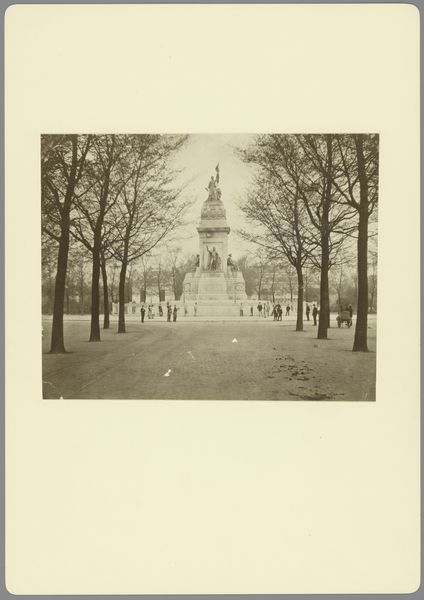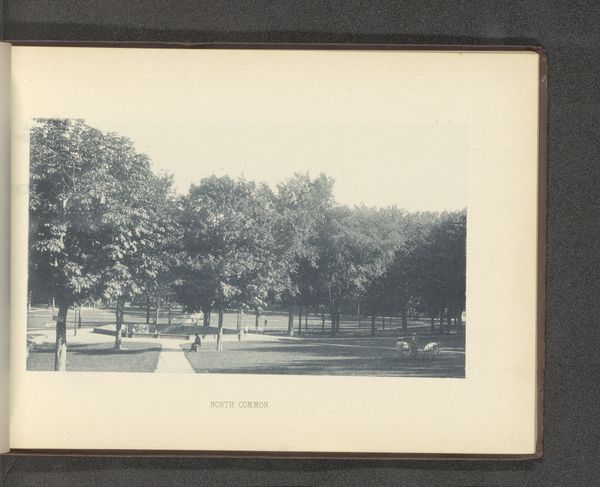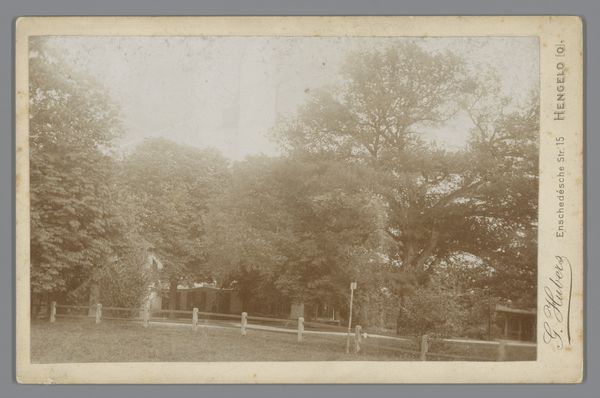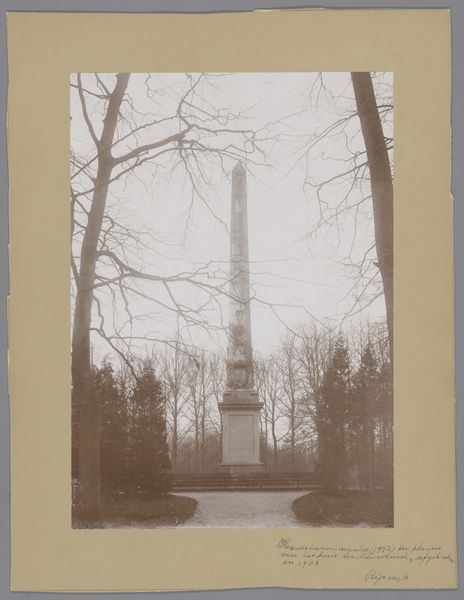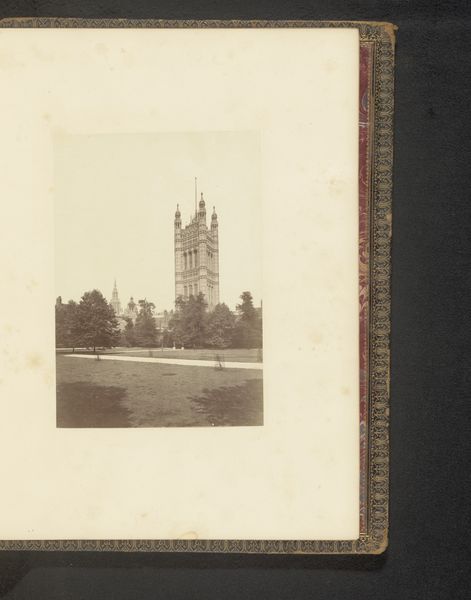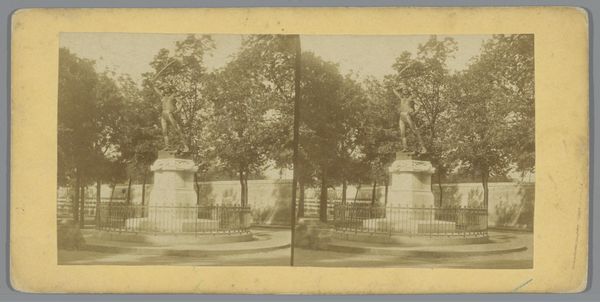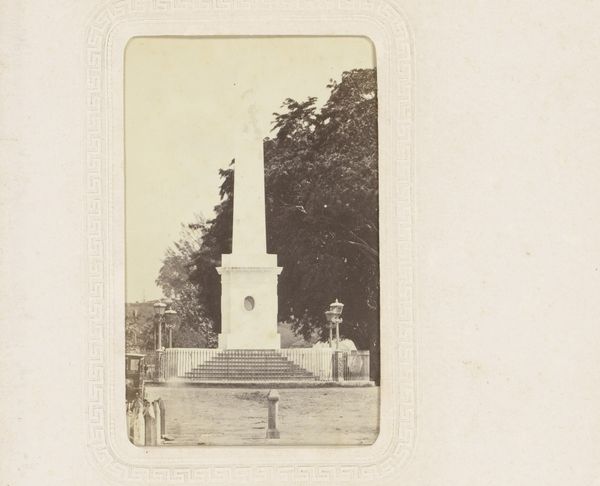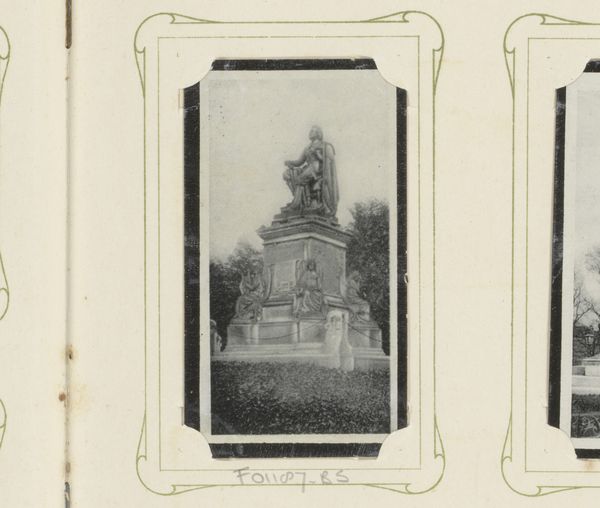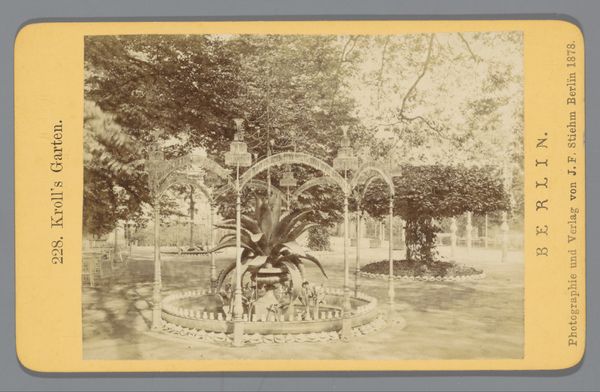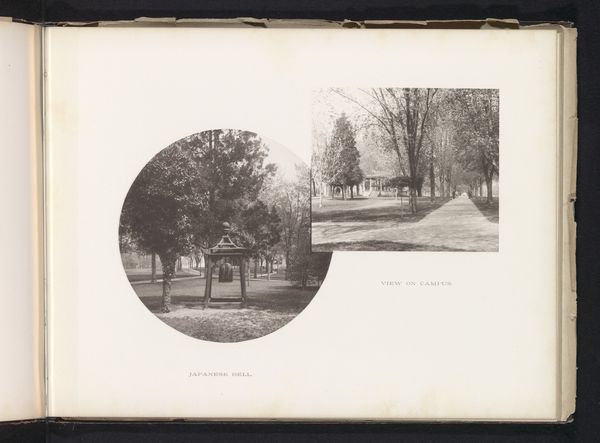
Dimensions: height 137 mm, width 97 mm
Copyright: Rijks Museum: Open Domain
Curator: This gelatin-silver print, taken between 1877 and 1901, offers a view of Plein 1813 in The Hague, through the lens of Heinrich Wilhelm Wollrabe. Editor: It’s hauntingly beautiful. There’s something about the starkness of the trees against that immense, pale monument. A certain… grandeur mixed with the everyday bustle. Curator: The monument is certainly the focal point. It’s an imposing structure, a paean to Dutch independence after French occupation. You get a sense of the national pride tied up in its making. Think of the quarrying of the stone, the labor involved in its construction and assembly... Editor: Yes, and who's benefiting? How did these sculptors become the mouthpieces of national pride? It always feels like a transaction somehow, doesn't it? Curator: Perhaps. Wollrabe's skill also captures the figures gathered around the square—their attire, their activities, hints at a particular class and societal strata. These are probably civil servants or traders taking a constitutional. Editor: It's that human scale that gets me. They look like little paper cutouts dwarfed by the stone and bronze, oblivious perhaps, or taking for granted, the socio-political structures erected around them. What’s striking is how the very photographic process here feels of the age, an index, really, of late 19th-century labor, a moment made through industrial means. Curator: Photography did democratize portraiture and documentation to a degree, altering consumption habits and what could be materially recorded. Editor: Looking closer at the monument... is that neoclassical influence I detect? And what’s she holding aloft, victory? It feels a tad… ironic, capturing "independence" with such borrowed imperial rhetoric, given the materials' exploitation! Curator: Ah, irony is perhaps inherent. It certainly captures a moment of burgeoning national identity and the use of classical language, reinterpreted, for its expression. Wollrabe, in capturing this scene, offers us a chance to consider all these layers: artistic, political, and material. Editor: A good picture, like any relic, is a mirror held to a moment— and our reflections staring back often startle us.
Comments
No comments
Be the first to comment and join the conversation on the ultimate creative platform.
